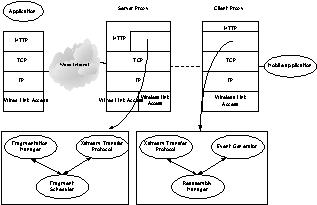
XML (eXtensible Markup Language) has been developed and deployed by domain-specific standardization bodies and commercial companies. We propose a framework for efficiently streaming XML documents over a wireless environment, by leveraging on the rich semantics and structural characteristics of the XML document and the flexible management of units containing fragments of data. In this paper we describe the framework and the techniques involved and study the performance of the techniques.
Mobile Computing, Wireless, XML, Streaming, Fragmentation.
The release of the XML(extensible Markup Language) 1.0 specification standard by the World Wide Web Consortium (W3C), in 1998, has fueled the development of XML, both in the context of applications and research. There have been numerous research efforts that sought to investigate ways to efficiently represent XML data for transmission across a wireless environment. With the typical XML documents being large in size, streaming them over a wireless environment may pose challenges as the bandwidth is scarce and the operating environment is hostile in a wireless environment.
In this paper, We propose a middleware, Xstream(XML Streaming) for efficiently streaming XML contents over a wireless environment by leveraging on the rich semantics and structural characteristics of the XML document and the flexible management of units containing fragments of data into autonomous units, which are known as XDU(Xstream Data Unit) fragments.
The design of Xstream is based on a small set of guiding principles that shaped the formulation of the framework used for Xstream.
Based on the design principles, we derive the overall architecture of Xstream, which is shown in Figure 1.

Figure 2 briefly outlines the operation flow of a typical scenario that is centered on the idea of a mobile application requesting an XML document
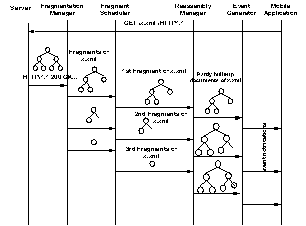
An XDU fragment is an organizational unit that is segmented from an original XML document that is to be streamed across a wireless environment. An XDU fragment is well formed if the structure of the fragment contains element tags that have properly enclosed opening and closing tags, correctly nested elements, and there is exactly one root element.
We proposed a fragmentation strategy, Fragmentation by Size. The size of the fragment is determined by the capacity of the network, which is determined by the Maximum Transfer Unit (MTU) size of the path. Suppose we have an XML document formed into a tree in Figure 3. The size of each node is represented by the number besides the node. This strategy makes use of a breadth-first search technique to search for appropriate fragments that are within the MTU size.
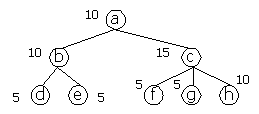
This scenario is illustrated in Figure 4. Assume the MTU size is 30.
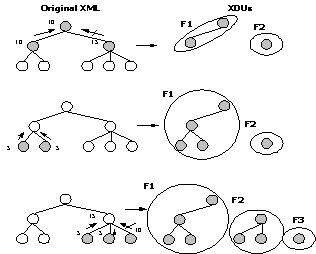
In this section we evaluate the performance of one of the fragmentation strategies we proposed, Fragmentation by Size. We generated XML documents for our experiments using IBM¡¦s XML Generator tool [4], using the NITF (News Industry Text Format) DTD [3]. We generated samples for experiments by varying the level of breadth while keeping the level of depth at 5. Figure 5 shows the distribution of the size of the XDUs in a single. Among the XDUs created, the size of 32 XDUs are between 60% and 70% of the MTU size. There are 26 XDUs which are of size between 70% and 80% of the MTU size, and 23 of them are of size between 80% and 90% of the MTU size and 9 of them are of size over 90% of the MTU size.
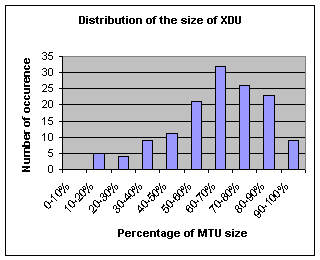
In this paper, we have proposed the Xstream framework which leverage the rich semantics and structural characteristics of the XML document to implement efficient streaming of XML documents over a wireless environment, and to facilitate flexible management of units containing fragments of data. One of the fragmentation strategies, which is Fragmentation by Size, is implemented. We described a set of experiments that examined the performance of the fragmentation strategies. As part of our near future work, we intend to formulate a packetizing strategy to pack isolated XDUs to maximize its occupancy to the MTU size.